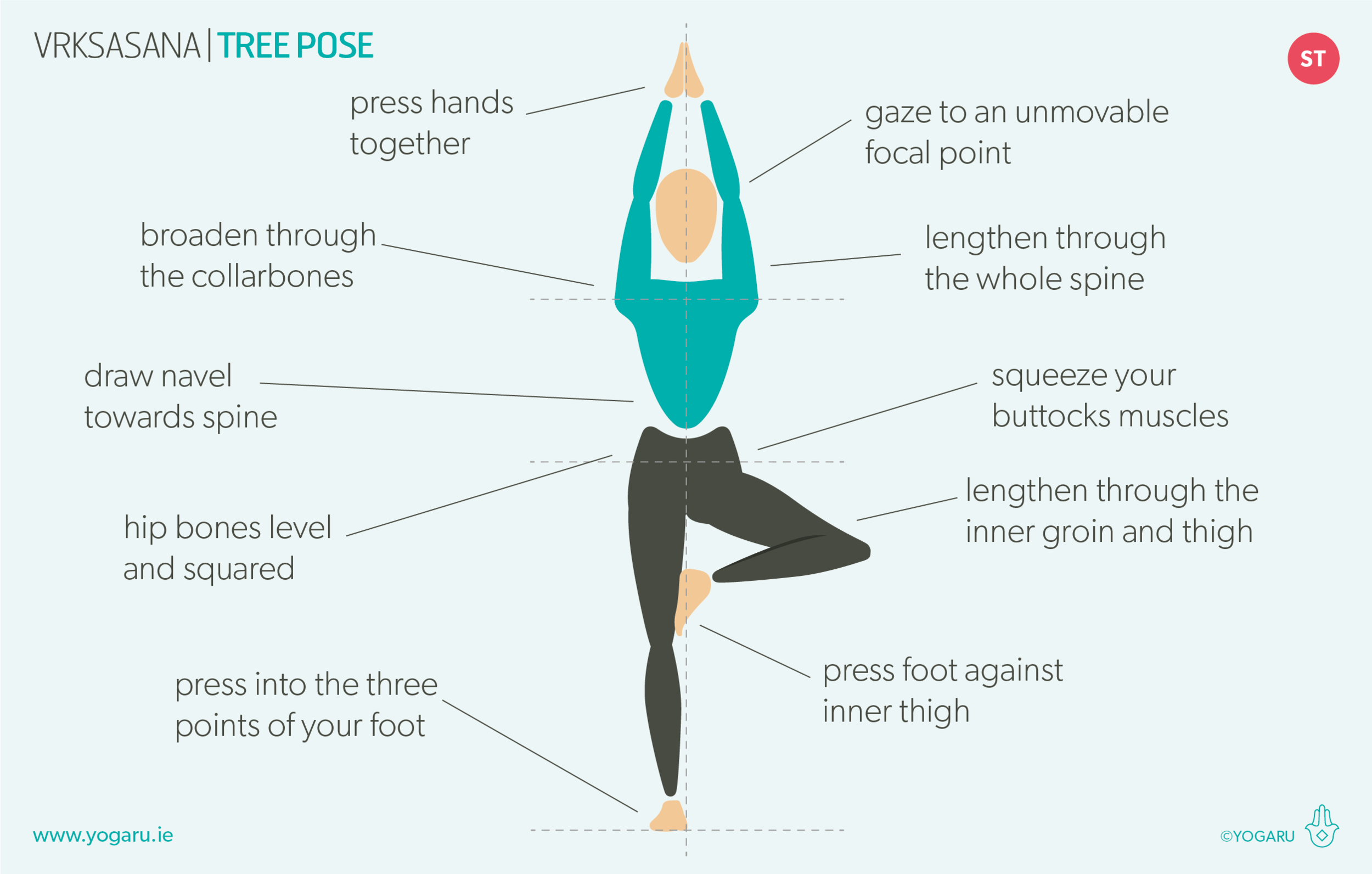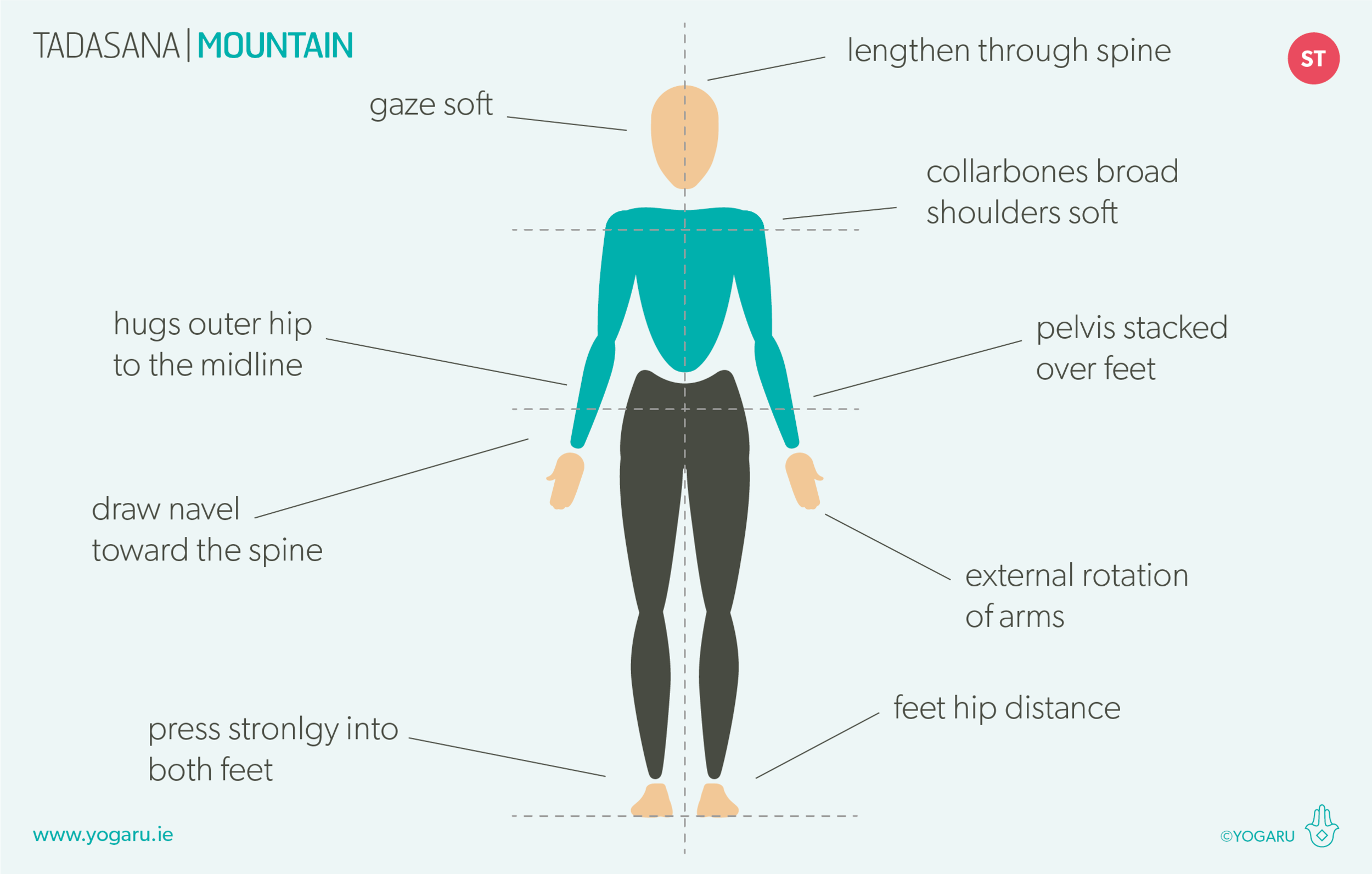ROOTING DOWN
Vrksasana/Tree is the natural progression from our last pose breakdown – Tadasana/Mountain. There is no Vrksasana/Tree without first finding your roots in Tadasana/Mountain. So be sure to feel find your stable foundation in Tadasana/Mountain before you start moving into Vrksasana/Tree. Tree Pose teaches us the principles of rooting down to connect with the support of the earth beneath to help you find your centre of gravity and reach up through the whole length of your spine.
THE BENEFITS OF VRKSASANA/TREE POSE
It may seem like a simple enough pose but it has lots to offer – it builds focus and improves your coordination; stretches the inner groin, arms and shoulders; and strengthens the core, hip flexors, glutes and ankle joint.
It is the perfect pose for runners to add into their routine to build ankle stability and strong feet. With 26 bones, 25 joints and 33 muscles our feet are designed to support the weight of the whole body without the intervention of shoes! Your feet get tired and sore because the bones are being squashed together and the muscles are being bypassed by arch support. Whilst I’m not quite suggesting you turn you back on wearing conventional shoes, getting barefoot and onto your yoga mat is the best thing you can do for your feet to let them spread to their natural shape, realign the bones, and get all the muscles firing again.
EXPLORING THE VRKSASANA/TREE POSE IN YOUR PRACTICE
After your the first row warm up come to a standing position and explore the three points of each foot: the ball of the big toe, ball of the little toe and middle of the heel – root down into them equally, while at the same time feeling a lift in the three arches of each foot. When we root down into these three points, the arches naturally lift into a triangular dome shape. This action is called Pada Bandha (foot energy lock) – it brings an awakening and energy to the leg muscles that travels up the entire body. Building strong and flexible feet will help you find your foundation throughout your yoga practice, cultivating a flow of energy from the ground up. You’ll find that when you take time to focus on the placement of your feet the ‘rooting-down’ effect will naturally help you achieve better alignment in all standing poses. Having an awareness and appreciation of your feet will not only benefit your yoga practice but also your day-to-day movement and activities.
ALIGNMENT CUES
This sequence will bring you through a progression of poses to prepare you for Tree Pose to strengthen the core, hip flexors and glutes and stretch out the inner groin. You will come into Tree Pose twice, once at the end of each standing flow. When you arrive into each standing pose bring your attention to the placement of your feet. Scan through the three points of your feet and find the connection to your sticky mat. When you press into these three points you will feel the three arches lifting and a strong suction drawing you down and projecting you up at the same time.
The following are some alignment cues to help you get into the pose with ease. Read through them and spend a bit of time in your Vrksasana/Tree:
From Tadasana, hands on hips, inhale, pour your weight into your left foot, draw your navel towards your spine.
Bend your right knee and open your hip out to the side, place your right foot on your right calf, or at the top inside of your left thigh.
Press your right foot against your inner left thigh and your thigh into your foot.
Place your hands on your hip bones to check they are level, press firmly into the standing leg, squeeze the glute of the lifted leg to help open the hip out to the side, exhale here.
Pick an unmovable point, called your ‘dristi’, to focus on, which will help you find your balance.
Lengthen through your spine to the tip of your crown, bring your hands to prayer position, inhale, raise your hands up over your head, broaden your collarbones.
We all have wobbly days. There is no shame in using a wall for support if your balance just isn’t with you today. You might find if you are a bit kinder to yourself and use the wall, the next time you try the sequence you will calmly find your best tree ever!
To save the images for personal use click and hold down the image until the ‘save image’ option appears; on Mac hold down ‘control’ and click the image to get the option box; on PC right click on the image to get the option box. Scroll down in the ‘option box’ and click ‘save image’.
Ruth Delahunty Yogaru





